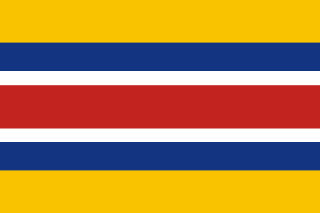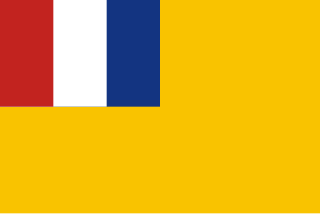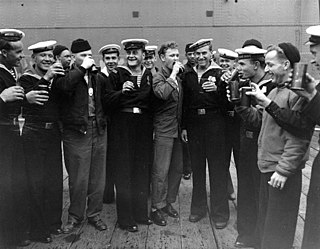 W
WMengjiang (Mengkiang), also known in English as Mongol Border Land or the Mengjiang United Autonomous Government, was an autonomous area in Inner Mongolia, formed in 1939 as a puppet state of the Empire of Japan, then from 1940 being under the nominal sovereignty of the Reorganized National Government of the Republic of China. It consisted of the previously Chinese provinces of Chahar and Suiyuan, corresponding to the central part of modern Inner Mongolia. It has also been called Mongukuo or Mengguguo. The capital was Kalgan, from where it was under the nominal rule of Mongol nobleman Demchugdongrub. The territory returned to Chinese control after the defeat of the Japanese Empire in 1945.
 W
WThe South Chahar Autonomous Government was a puppet state of the Empire of Japan, as well as an administratively autonomous component of Mengjiang from its creation in 1937 to its complete merger in 1939. Following the Japanese invasion of China in July 1937, regional governments were established in Japanese-occupied territories. After Operation Chahar in September 1937, which extended Japanese control to northern Shanxi region, more formal control of the area was established through the creation of the North Shanxi Autonomous Government, as well as the South Chahar Autonomous Government to the east of Shanxi.
 W
WAltanochir (1887–?) was an Inner Mongolian politician under the Republic of China and the Mengjiang government.
 W
WAltanochir (1882–1949) was an Inner Mongolian prince, politician, and general under the Republic of China and Mengjiang governments. He served as deputy head of Yeke-juu League. An ethnic Mongol, he was a native of Right-Wing Rear Banner, Ordos.
 W
WDemchugdongrub, also known as Prince De, courtesy name Xixian (希賢), was a Qing dynasty Mongol prince descended from the Borjigin imperial clan who lived during the 20th century and became the leader of an independence movement in Inner Mongolia. He was most notable for being the chairman of the pro-Japanese Mongol Military Government (1938–39) and later of the puppet state of Mengjiang (1939–45), during the Second Sino-Japanese War. In modern day, some see Demchugdongrub as a Mongol nationalist promoting Pan-Mongolism while others view him as a traitor and as the pawn of the Japanese during World War II.
 W
WThe flag used by the Mengjiang United Autonomous Government consists of a horizontal colour pattern of yellow, blue, white, red, white, blue and again yellow.
 W
WThe Inner Mongolian Army, also sometimes called the Mengjiang National Army, referred to the Inner Mongolian military units in service of Imperial Japan and its puppet state of Mengjiang during the Second Sino-Japanese War, particularly those led by Prince Demchugdongrub. It was primarily a force of cavalry units, which mostly consisted of ethnic Mongols, with some Han Chinese infantry formations.
 W
WJodbajab was a military officer and government official in the Inner Mongolia area under China's late Qing Dynasty and Mengjiang governments. He was an ethnic Mongol belonging to the Plain and Bordered White Banner of Xilin Gol League.
 W
WLi Shouxin was a pro-Japanese commander in the Manchukuo Imperial Army and later the Mengjiang National Army.
 W
WThe Yuan of Mengjiang is the monetary unit that was issued in 1937–1945 by several governments of Mengjiang.
 W
WThe Mongol United Autonomous Government was a Japanese puppet regime in Inner Mongolia from 1937 to 1939.
 W
WThe North Shanxi Autonomous Government was an administratively autonomous component of Mengjiang from its creation in 1937 to its complete merger into Mengjiang in 1939. Following the Japanese invasion of China in July 1937, regional governments were established in Japanese-occupied territories. After Operation Chahar in September 1937, which extended Japanese control to northern Shanxi region, more formal control of the area was established through the creation of the North Shanxi Autonomous Government, as well as the South Chahar Autonomous Government to the east of Shanxi.
 W
WOperation Chahar, known in Chinese as the Nankou Campaign, occurred in August 1937, following the Battle of Beiping-Tianjin at the beginning of Second Sino-Japanese War.
 W
WThe Soviet invasion of Manchuria, formally known as the Manchurian strategic offensive operation or simply the Manchurian operation, began on 9 August 1945 with the Soviet invasion of the Japanese puppet state of Manchukuo. It was the largest campaign of the 1945 Soviet–Japanese War, which resumed hostilities between the Union of Soviet Socialist Republics and the Empire of Japan after almost six years of peace. Since 1983, the operation has sometimes been called Operation August Storm after U.S. Army historian David Glantz used this title for a paper on the subject.
 W
WThe Soviet–Japanese War, known in Mongolia as the Liberation War of 1945 was a military conflict within the Second World War beginning soon after midnight on 9 August 1945, with the Soviet invasion of the Japanese puppet state of Manchukuo. The Soviets and Mongolians ended Japanese control of Manchukuo, Mengjiang, northern Korea, Karafuto, and the Chishima Islands. The defeat of Japan's Kwantung Army helped bring about the Japanese surrender and the termination of World War II. The Soviet entry into the war was a significant factor in the Japanese government's decision to surrender unconditionally, as it made apparent that the Soviet Union was not willing to act as a third party in negotiating an end to hostilities on conditional terms.
 W
WThe Suiyuan campaign was an attempt by the Inner Mongolian Army and Grand Han Righteous Army, two forces founded and supported by Imperial Japan, to take control of the Suiyuan province from the Republic of China. The attempted invasion occurred in 1936, shortly before the Second Sino-Japanese War. The Japanese government denied taking part in the operation, but the Inner Mongolians and the other collaborationist Chinese troops received air support from Japanese planes and were assisted by the Imperial Japanese Army. The entire operation was overseen by Japanese staff officers. The campaign was unsuccessful, mostly due to lack of training and low morale among the Mongolians and other collaborators. The defense of Suiyuan, one of the first major successes of China's National Revolutionary Army over Japanese-supported forces, greatly improved Chinese morale.
 W
WYondonwangchug was an Inner Mongolian nobleman of Ulanqab League and politician under the Qing Dynasty, Republic of China and Mengjiang governments.
 W
WYu Pinqing was a politician and industrialist in the Republic of China. He was Supreme Member of the Southern Chahar Autonomous Government, later he was also appointed Vice-Chairman of the Mongolian United Autonomous Government and the Mongolian Autonomous Federation. He was born in Nangong, Zhili (Hebei).